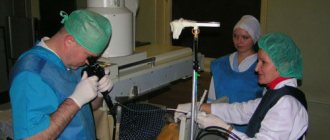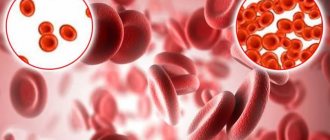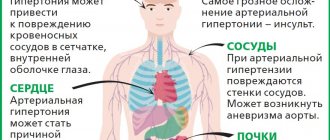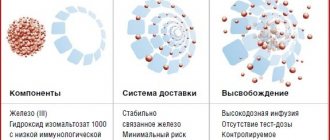Description
Extensive laboratory testing of thyroid function.
The thyroid gland is one of the most important organs of the human endocrine system. The main function of the thyroid gland is to produce thyroid hormones. They regulate most metabolic processes in the body.
Why is it important to have your thyroid examined?
The thyroid gland affects the entire body as a whole, and even the most insignificant, at first glance, deviations from the norm have an impact on the body’s metabolism, cardiac, nervous and reproductive systems. The earlier a thyroid pathology is detected, the easier it is to treat.
Why is it better to undergo a comprehensive examination?
The thyroid gland synthesizes 2 main hormones: T3 and T4, the formation of which is regulated by TSH (synthesized in the pituitary gland), it is important to see the whole picture. In addition, TG and TPO are involved in the formation of hormones in the thyroid gland, to which, in some forms of pathology, antibodies are formed in the thyroid gland, therefore, to assess the function of the thyroid gland, a comprehensive examination is necessary. The value of laboratory tests increases with simultaneous ultrasound examination (US).
Symptoms of thyroid dysfunction (in children and adults):
- Sudden weight changes.
- Unstable menstrual cycle in women and teenage girls.
- Change in appearance: problems with skin, hair, nails.
- Disorders of the gastrointestinal tract and cardiovascular systems
- Memory deterioration, slow thinking and speech.
- Increased sweating, hand tremors and increased body temperature.
- Weakness, irritability, tearfulness.
- Decreased immunity, tendency to colds.
Who should have a thyroid examination?
Everyone without exception: women and men, children.
For the purpose of prevention and if one or more of the above symptoms appear, it is recommended to undergo a comprehensive examination of the thyroid gland: take tests, undergo an ultrasound and, based on the results of the examination, consult a doctor.
When “plus” is “minus”: excess weight and the thyroid gland
Diseases of the thyroid gland have been known for a long time and are often visible to the naked eye. Famous thinkers, scientists and doctors of Ancient China, Egypt, India, Greece and Rome, who lived before our era, described “tumors” of the neck, knew about the consequences of these diseases and tried to treat them. And Napoleon, choosing soldiers, carefully examined the necks of the applicants.
The thyroid gland is the “commander” of all metabolic processes. Its hormones normally help the body adapt to environmental conditions by speeding up or slowing down metabolism. And organ function disorders invariably affect appearance, weight, psyche and well-being.
About prohormones and true hormones
Tetra- and triiodothyronine, also known as T4 (thyroxine) and T3, are synthesized in the gland with the participation of iodine. In this case, T4 can be considered a prohormone due to its low biological activity. While T3 is a “true” hormone, and all known “thyroid” effects are associated precisely with its action. The conversion of T4 to T3 occurs directly in cells and with the participation of selenium. Therefore, a deficiency of this microelement can provoke symptoms of “hypothyroidism” with normal T4 levels.
T3 has the most “deep” effect on cells, “working” directly with the genetic apparatus of mitochondria and stimulating:
- synthesis or breakdown of proteins throughout the body,
- breakdown or accumulation of glucose and fats,
- strengthening or weakening of thermal production,
- deterioration or improvement of thought processes
- and many other effects.
Many articles have been written about the functions of thyroid hormones, but this one will only talk about carbohydrate metabolism.
About “sugar” and the thyroid gland
Glucose is the main and highest quality source of “fuel” for the body, a kind of “95th gasoline.” Oxygen serves as the spark to ignite it.
Normally, with the participation of insulin, glucose from the blood enters the cells, where it is used to produce energy. Remaining glucose is stored in the liver and skeletal muscles in the form of glycogen, as a “local fuel source.” If too much glucose is supplied, part of it is converted into fat and stored in case of energy deficiency.
T3 in this direction:
- stimulates the absorption of glucose in the intestine,
- improves the “uptake” of glucose by cells,
- potentiates the action of insulin, facilitating glucose access into the cell,
- promotes energy production,
- and also stimulates cellular “respiration”.
A deficiency of thyroid hormones disrupts the utilization of glucose by cells, promoting its deposition into fats. They say about such people: “I breathed next to candy and gained weight.” Diets and exercise have no effect.
Excess T4, T3 - on the contrary, leads to unmotivated weight loss and rapid exhaustion.
Among other things, an imbalance of thyroid hormones provokes the development of diabetes. And if previously it was believed that this was important only for type 1 diabetes (insulin-dependent), then more recently it is also about type 2 diabetes.
It should be noted that metabolic disorders appear already in the subclinical course of the disease (when the level of hormones is slightly changed)
It is for this reason that thyroid screening is recommended, even in the absence of a clear clinical picture.
Diagnostics
An examination of the thyroid gland necessarily includes an assessment of the levels of T4 and T3, as well as TSH, the control hormone of the pituitary gland.
The hormonal “connection” in this case occurs according to the principle of “negative feedback”; a deficiency of T4 and T3 provokes an increase in TSH.
All hormones in the blood, including T4 and T3, bind specific transporter proteins. You just can’t “get out” of this “connection,” and hormones cannot exert their effect until the proteins “release” them. Only free fractions have effects on the body.
This feature requires assessment of not only the general level of thyroid hormones, but the concentration of their free forms - T4free, T3free.
Of course, in addition to the presence or extent of existing violations, you can also learn about future risks. The likelihood of destruction of the thyroid gland is indicated by an increase in antibodies to thyroid peroxidase (anti-TPO) and thyroglobulin (anti-TG).
Thus, “unexplained” weight changes, combined with other symptoms of “thyroid” imbalance, require an assessment of blood levels:
- TSH,
- T4sv,
- T3sv,
- anti-TPO
- and anti-TG.
These studies do not require special preparation and are available for delivery individually or in the format of the complex “Examination of the thyroid gland. Screening".
Thyroid-stimulating hormone (TSH, thyrotropin)
A glycoprotein hormone that stimulates the formation and secretion of thyroid hormones (T3, T4).
They enter the body with food and are also synthesized by cells of adipose tissue, liver, and intestines. They do not circulate freely, but are bound to proteins and transported in the form of macromolecular complexes - lipoproteins. They are the main lipids of fatty deposits and food products. The triglyceride molecule contains triatomic glycerol and 3 residues of higher fatty acids, mainly palmitic, stearic, linoleic and oleic.
It is produced by basophils of the anterior pituitary gland under the control of thyroid-stimulating hypothalamic releasing factor, as well as somatostatin, biogenic amines and thyroid hormones. Increases vascularization of the thyroid gland. Increases the supply of iodine from blood plasma to thyroid cells, stimulates the synthesis of thyroglobulin and the release of T3 and T4 from it, and also directly stimulates the synthesis of these hormones. Enhances lipolysis.
There is an inverse logarithmic relationship between the concentrations of free T4 and TSH in the blood.
TSH is characterized by daily fluctuations in secretion: blood TSH reaches its highest values at 2 - 4 am, the highest level in the blood is also determined at 6 - 8 am, the minimum TSH values occur at 17 - 18 pm. The normal rhythm of secretion is disrupted when awake at night. During pregnancy, the concentration of the hormone increases. With age, the concentration of TSH increases slightly, and the amount of hormone emissions at night decreases.
Limits of determination:
0.0025 mU/l - 100 mU/l.
What tests to take to “check your thyroid gland”
Most often, an endocrinologist at an appointment assesses the condition using two indicators: TSH hormones and free T4.
There are receptors for the T4 hormone in the myocardium, and when an endocrinologist prescribes hormone replacement therapy for reduced thyroid function in the form of the synthetic hormone T4, sometimes signs of an overdose of T4 appear in the form of an increase in heart rate - tachycardia.
This is due to the reduced conversion of T4 to T3 - as I already said, T4 inside the cell must necessarily turn into the active hormone T3. Thus, a paradoxical situation arises: a patient may have signs of a hormone overdose and hypothyroidism at the same time.
Therefore, in my opinion, it is not enough to evaluate thyroid function solely by these two indicators. Although, according to medical and economic standards, a doctor in a free clinic is limited to precisely this volume of research.
If these indicators are normal, formally there are no problems with the thyroid gland. And they can be! Therefore, I always suggest that my patients undergo additional diagnostics.
Free thyroxine (free T4)
The most important stimulator of protein synthesis.
Produced by follicular cells of the thyroid gland under the control of TSH (thyroid-stimulating hormone). It is the predecessor of T3. By increasing the basal metabolic rate, it increases heat production and oxygen consumption by all tissues of the body, with the exception of the tissues of the brain, spleen and testicles. Increases the body's need for vitamins. Stimulates the synthesis of vitamin A in the liver. Reduces the concentration of cholesterol and triglycerides in the blood, accelerates protein metabolism. Increases calcium excretion in urine, activates bone turnover, but to a greater extent, bone resorption. It has a positive chrono- and inotropic effect on the heart. Stimulates reticular formation and cortical processes in the central nervous system.
During the day, the maximum concentration of thyroxine is determined from 8 to 12 hours, the minimum - from 23 to 3 hours. During the year, maximum T4 values are observed between September and February, and minimum values are observed in the summer. Women have lower thyroxine concentrations than men. During pregnancy, the concentration of thyroxine increases, reaching maximum values in the third trimester. Levels of the hormone in men and women remain relatively constant throughout life, decreasing only after 40 years.
The concentration of free thyroxine, as a rule, remains within the normal range in severe diseases not related to the thyroid gland (the concentration of total T4 may be reduced!).
An increase in T4 levels is facilitated by high serum bilirubin concentrations, obesity, and the use of a tourniquet when drawing blood.
Limits of determination:
5.1 pmol/l - 77.2 pmol/l.
What is autoimmune thyroiditis (AIT)
This is a condition when for some reason the thyroid tissue is perceived as foreign and B lymphocytes begin to produce antibodies against it. These antibodies have a stimulating effect and provoke symptoms of thyrotoxicosis: sweating, increased body temperature, aggression, causeless weight loss, tremors and interruptions in heart function.
A destructive effect on the gland may also occur, and then symptoms of hypothyroidism may develop - constipation, weight gain, swelling, drowsiness, weakness, dry skin and elbows.
The clinical picture of the disease may not appear immediately, so symptoms and complaints may be absent for a long time, and antibodies in a blood test will turn out to be an accidental finding.
Free triiodothyronine (free T3)
Thyroid hormone stimulates the exchange and absorption of oxygen by tissues (more active than T4).
Produced by follicular cells of the thyroid gland under the control of TSH (thyroid-stimulating hormone). In peripheral tissues it is formed during deiodination of T4. Free T3 is the active part of total T3, accounting for 0.2 - 0.5%.
T3 is more active than T4, but is found in the blood in lower concentrations. Increases heat production and oxygen consumption by all body tissues, with the exception of brain tissue, spleen and testicles. Stimulates the synthesis of vitamin A in the liver. Reduces the concentration of cholesterol and triglycerides in the blood, accelerates protein metabolism. Increases calcium excretion in urine, activates bone turnover, but to a greater extent, bone resorption. It has a positive chrono- and inotropic effect on the heart. Stimulates reticular formation and cortical processes in the central nervous system.
By 11–15 years, the concentration of free T3 reaches adult levels. In men and women over 65 years of age, there is a decrease in free T3 in serum and plasma. During pregnancy, T3 decreases from the first to the third trimester. One week after delivery, serum free T3 levels return to normal. Women have lower concentrations of free T3 than men by an average of 5 - 10%. Free T3 is characterized by seasonal fluctuations: the maximum level of free T3 occurs from September to February, the minimum in the summer.
Limits of determination:
1.5 pmol/l - 46.1 pmol/l.
How to support the thyroid gland with nutrition?
Adequate functioning of the thyroid gland is facilitated by a huge number of cofactors - “helper molecules” that participate in biochemical transformations. In particular, these include iron (a laboratory indicator of tissue iron reserve is ferritin) and selenium - an important element that prevents the occurrence of an autoimmune condition. Of course, zinc and copper are important.
Therefore, I recommend including foods rich in these microelements in your diet. For example, 2-3 Brazil nuts contain your daily dose of selenium. Seafood contains a lot of zinc, and offal contains iron. Moreover, these products must be whole, and not processed into semi-finished products.
Whole foods are associated with the concept of nutritional density, also known as specific calorie content. This is the amount of microelements, vitamins and macroelements, as well as proteins, fats and carbohydrates, which account for 1 kcal. The more of these substances there are per 1 kcal, the more nutritious the product is considered and the more preferable it is for inclusion in the human diet.
Antibodies to thyroid peroxidase (AT-TPO, microsomal antibodies)
Autoantibodies to the enzyme of thyroid cells.
Antibodies to thyroid peroxidase are an indicator of the aggression of the immune system towards its own body. Thyroid peroxidase provides the formation of an active form of iodine, which can be included in the process of iodification of thyroglobulin. Antibodies to the enzyme block its activity, as a result of which the secretion of thyroid hormones (T4, T3) decreases. However, TPO Abs can only be “witnesses” of the autoimmune process.
Thyroid peroxidase antibodies are the most sensitive test for detecting autoimmune thyroid disease. Usually their appearance is the first shift that is observed in the course of developing hypothyroidism due to Hashimoto's thyroiditis. When sufficiently sensitive methods are used, TPO Abs are detected in 95% of people with Hashimoto's thyroiditis and in approximately 85% of patients with Graves' disease. Detection of AT-TPO during pregnancy indicates the risk of developing postpartum thyroiditis in the mother and a possible impact on the development of the child.
Reference limits largely depend on the research method used. Low levels of AT-TPO can sometimes be found in apparently healthy people. It remains unclear whether this may reflect a physiological norm, or is a precursor to autoimmune thyroiditis, or is a problem with the specificity of the method.
Limits of determination:
3 U/ml - 1000.0 U/ml.
Norm of T3 hormone
Standard indicators depend on what equipment is used to conduct the study. Each laboratory makes its own choice in favor of certain equipment and necessary reagents. Therefore, it is impossible to define such a concept as “the norm of triiodothyronine.” Its amount is considered normal if the results obtained fall within the reference limits (from 3.15 to 6.25 pmol/l), which are indicated on the laboratory form. A form is generated on a computer, and the normal limits and amount of the hormone are determined on it.
Why does the body attack its own cells?
One of the reasons for this condition may be small intestinal permeability syndrome. With this syndrome, the tight junctions between the intestinal cells are opened and something that cannot penetrate there through intracellular absorption appears in the bloodstream: food particles that have not been digested to amino acids and simple sugars, gluten, casein, lectins, viruses and bacteria.
The immune system responds to this by producing antibodies. Very often, the amino acid sequences in the walls of bacteria and large molecules are similar to the amino acid sequences in the tissues of the body, in particular the thyroid gland, as a result of which the antibodies produced attack not only foreign particles, but also the organ itself, leading to an autoimmune condition.









